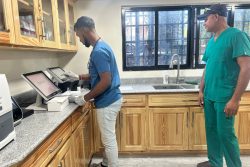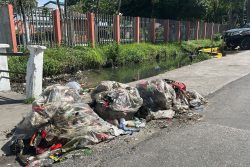Representatives from the nine Amerindian tribes in Guyana interacted with Culture Minister Dr Frank Anthony at the Walter Roth Museum of Anthropology last month with several committing to providing items for the Museum’s collection.
According to a Government Information Agency (GINA) press release the representatives had been in Georgetown August 20 for Carifesta X and a workshop on enhancing the Amerindian handicraft sector. The groups had visited the Museum as part of the workshop and some were amazed at the artefacts on display. The minister told the group that the Museum had been built to showcase various aspects of the Amerindian culture but it still needs more indigenous materials to add to its collection.
In this regard, he said any contribution they can make to the collection would be appreciated.
Paul Chekama, a member of the Wai Wai tribe from Region Nine said he felt “at home being in the museum for the first time” even though many of the artefacts are relatively new to him. Pondering the minister’s suggestion Chekama said his community has several skilled craftsmen and women. While looking through the Museum’s photo gallery Chekama was elated to see his brother and uncle in a photograph taken in the 1950s.
Meanwhile, Administrator of the Museum Jenny Wishart used the occasion to donate 350 copies of a new publication on various aspects of the Wai Wai culture to Chekama to share with members of his community. The publication titled The Tropal Dynamics of a Wai Wai House was done by Guyanese Cultural Anthro-pologist George Mentor who spent years studying the Wai Wai tribe.
It was released by the ministry. A photograph of the Umana Yana adorns the front page of the publication which describes in detail all the features of the house and its meaning.
Umana Yana, one of the many heritage sites in Georgetown represents a Wai Wai house and according to Wishart, the publication was written to resolve many of the questions about the Wai Wais of Guyana. Copies of the publication are being sold in the Museum.
Meanwhile, other visitors to the Museum told GINA that they learnt much from the tour. Lionel John, a Macushi described his experience as interesting, noting that when he returns to his Region Nine community he would be able to “tell a good story.”









